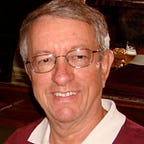REACHING FOR THE STARS
Mauna Kea Observatory
Hawai’i’s Stairway to the Stars
Story and Photos by John Penisten
The Island of Hawai`i , or the Big Island as it’s also known, is the least likely place one would expect to take a stargazing tour of the tropical heavens. Tropical islands are not generally known as sites for astronomical observatories. However, Hawai`i Island is home to the world’s premier astronomy site: Mauna Kea Observatory at the 13,796 ft. summit of Mauna Kea Mountain, the islands’ tallest peak. It is here that astronomers are reaching for the stars and beyond and making fascinating discoveries about the universe.
On Top of the World
Recognized by astronomers as the world’s premier site for deep space research, Mauna Kea literally sits atop of the astronomy world. The multi-telescope complex has a worldwide reputation and following.
Deep Space Mysteries
Astronomers and scientists from around the globe compete for limited time on the telescopes to delve into the mysteries of deep space. Some scientists wait for months, even years, for a chance to use a Mauna Kea telescope to conduct their research.
Envy of the World
Mauna Kea Observatory complex is popular because its telescopes have more light-gathering power and viewing surface than any other astronomy site on Earth. It’s no wonder Mauna Kea is so well known and envied in the astronomy world.
Telescope Types
On guided tours, visitors learn that an optical telescope is used primarily for photography, while an infrared scope measures radiation emitted by stars, planets, galaxies, and other heavenly bodies. Visitors will also learn that Mauna Kea has the best infrared conditions in the world, where the thin, dry air allows infrared rays to penetrate Earth’s atmosphere.
Short of Breath
While Mauna Kea has the best conditions for astronomy, there is a disadvantage: the difficulty of working at such a high elevation with only 60 percent of the normal oxygen supply. Some scientists and astronomers who work here find it hard to adapt. Visitors to the summit soon learn to breathe slowly and deeply to avoid altitude sickness.
Getting the Latest
In addition to the stargazing programs open to the public at the Mauna Kea Visitor Information Station (at the 9,200 ft. level) , several Big Island tour operators provide various stargazing and summit tours to Mauna Kea. Some telescope observatories also provide visitor education programs and facility tours. For details, check the Mauna Kea Visitor Information Station website: https://hilo.hawaii.edu/maunakea/visitor-information/station
All visitor programs are weather dependent. Call the Visitor Information Station 808–934–4550 for details and current road conditions. The visitor center’s daily hours are 9 A.M. to 9 P.M.
Astronomy Museum and More
A further source of information on Mauna Kea’s observatories and related astronomy programs and activities is the Imiloa Astronomy Center located in Hilo. The center, an outreach facility of the University of Hawai’i at Hilo, features Hawaiian cultural and astronomy science exhibits, displays and planetarium activities about Mauna Kea and the Hawaiian skies. For details, call 808–932–8901 or see: https://imiloahawaii.org/
Caution is Advised
Independent travelers can do self-tours to Mauna Kea but must rent a four-wheel drive vehicle for the hazardous mountain summit road. Car rentals are available in Hilo and Kona on the Big Island. One section of the summit road is unpaved, rough, steep and winding gravel while the rest of the paved high-elevation road is very steep.
Mountain weather is subject to drastic and rapid change, especially during the winter months of December through March, and warm clothing is always necessary. High winds, snow, and ice road conditions anytime can make Mauna Kea a very hazardous place and caution is required.
Those with breathing difficulties, heart problems, pregnant women, and youngsters under age 16 are advised not to travel to the summit. Scuba diving within 24 hours prior to going up the mountain is not advised. Mauna Kea’s extremely thin air can cause altitude sickness.
Visitors are advised to check on weather and road conditions before attempting the summit drive. There are no gas stations or visitor services available at the visitors’ center. The Mauna Kea Visitor Information Station is about 40 miles from Hilo and 50 miles from Kailua-Kona, the island’s main towns.
Previous versions of this story have appeared in Verve Magazine/EVA Air, Polynesian Magazine/Polynesian Airlines, Aloha Magazine and International Travel Plan.
Other Hawai’i Stories
About the Writer
John Penisten is a photojournalist and longtime resident of Hilo, Hawai’i. He has authored the guidebooks Hawai’i the Big Island, Kaua’i the Garden Island, Adventure Guide to Hawai’i, and Experience the Big Island: The Road to Adventure. His personal adventure book Green Hills and Blue Lagoons: A Peace Corps Memoir covers his travels and experiences as a U.S. Peace Corps Volunteer in the Fiji Islands, South Pacific. His travel stories and photos have appeared in a variety of print and online publications.
